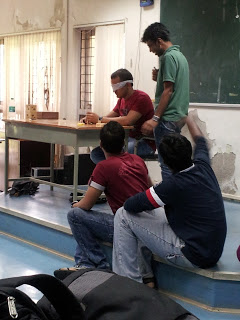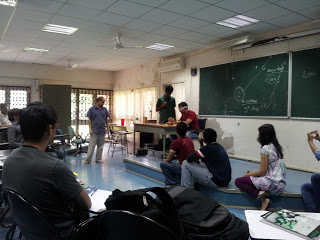Effective teamwork creates its own set of characteristics that makes it possible to see the cohesion in a group. When an efficient team gets to work, the structure that has been put into place helps the group obtain productive results. In order to create a productive team, you first need to be able to identify the characteristics of effective teamwork.
Why is team work important?
Delegation
A team that works well together understands the
strengths and weaknesses of each team member. One of the benefits of strong
teamwork in the workplace is that team leaders and members become proficient at
dividing up tasks so they are done by the most qualified people.
Efficiency
Work groups and teams develop
systems that allow them to complete tasks efficiently and quickly. When a task
is handed to a well-trained and efficient team, the team's work pace assures
that the task will be completed quickly and accurately.
Ideas
Teams in the workplace often
meet to discuss how to solve company issues. When a team works well together,
it allows staff members to feel more comfortable in offering suggestions.
Support
There are challenges each day
in any workplace, and a strong team environment can act as a support mechanism
for staff members. Work group members can help each other improve their
performance and work together toward improving their professional development.
This particular exercise of 3 idiots crossing the valley was to be performed in groups of
three members each. Task given to a group is to switch
over from left side of the valley to the right side of the valley by
taking the support of the pole as shown in the cartoon.
Direct jumping and attempts are considered FATAL and not welcomed at all. The
basic motto of the task is to enable the students to understand the teamwork and
Organization and Management through experiencing this task.
All the three members have interchanging roles in the
completion of the task .If we look closely at the table of the steps of the
exercise we would notice that the here friends have equal distribution of risky,
half-risky and no-risky. Therefore all three members’ roles are designed
“EQUALLY STRONG”. A big part of this exercise is in the preparation of the
exercise. All the movement must be properly synchronous for proper completion
of the task. All the three members while crossing the river communicate and
coordinate with each other through sound/signal. We also see that the
structuring of the Team Roles is very important the completion of the task.
We have following observations overall from the exercise :
1) All three members have equal distribution of different
kinds of situation :
High Risk 01 times
Half Risks 02 times
Fully Safe 02 times
2) All three members have the same
role in terms of effort and risk. Nobody was overloaded or relaxed.
3) Communication and feedback is
essential while working in a team.
4) Every member is indispensable in
completing the task.
5) There were equal instances when one
needed each other.


.png)







